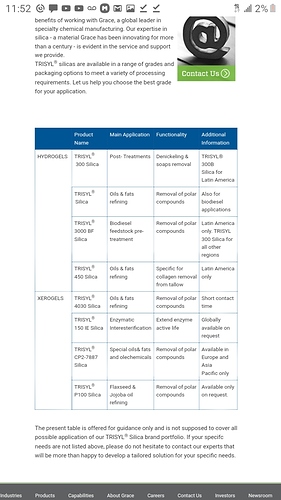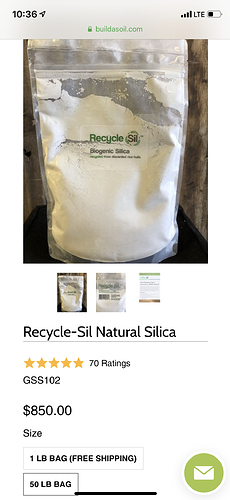I have a book that breaks down sud chemie, trisyl, oil dri and many others very specifically. Lemme see if I can find it…I’ve tried plenty of diff brands but b80 celite combo was my fav
Yeah I talked to the people at afs at mjbizcon. I think they are good up to 6# runs. 1 time use.
I think they are members here too.
Look these up by name for now to learn more about them I gotta look for my book…some of these can be used for other processes
i do silica b80 combo. That’s why i’m wondering if the opal would be even a further improvement.
https://instagram.com/afs_filter?igshid=1o14fpzk31kl6
These guys. One of my guys in Denver is trying em out. Great idea, but at $60-70 a run it’s not worth it. Down to $20-25, then it’s worthwhile. Until then they are too expensive. And need to get different sizes.
Definitely will amigo.
From what gather the Opaline acts like Si60 & clay at the same time. I’m sure there will always be reason to customize your own media use dependent on biomass and equipment variables.
Definitely interested to see opaline in action.
That sounds badass! I’d love to try some out and see how it goes. Do you think it would also work for chromatography?
Nope, you need only the opaline silica. Nothing else.
Yes, it is very common. It is mainly composed of weathered diatom skeletons (diatomaceous earth that has been microscopically crushed and tumbled throughout geological time). It has a small percentage of clay in it, too, going by the 9% alumina content. The way the materials (all of them) are prepared, by both the mine and the operator, makes a difference, too… granulated white RVM (regular volatile material) opaline silica and same granulated LVM (low volatile material) anaerobic low temperature calcined montmorillonite (gray not red, high temp aerobic LVM bentonite) are comparable, but the white opaline silica works best. Both should be oven dried in layers no more than 2 or 3 inches thick at over 300°F, preferably under vacuum. Just make sure to use a scroll or diaphragm pump (LOTS of water comes out) and filter the line of dust by wrapping the pans in 100% cotton pillowcases if you use vacuum!
Game changer!
When can we get some of this to try?
Terp loss has been the biggest complaints when toll processing crap material for ppl lately CRC. Already turning their black gold into something tasty and appealing, it’s never enough lol
Are we going to Mars or Nevada for this magic
Feasible for testing out crystaline silica / cristobalite
Im gonna assume though that any seller will have NSF / Kosher and be free of.
This is good and will hopefully shutdown the Celite use
Nice find on the article, @anon86230761! I dunno about Mars or Nevada, but I believe the Taft mine in California is where the stuff I used was dug up! ![]()
Where did you buy your opaline silica? Its the same thing as biogenic silica right?
I made an opaline silica thread so we can track all of our testing/ results in a seperate place
I especially like ball jar lid

